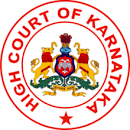History
HISTORY OF UTTARKANNADA DISTRICT:
KARWAR Town is a British creation, and, its history in replete with events and institutions having a ting of British patterns. The legal system of the District still carries with it the old ambivalence and ambiance. Our existing court halls, the facades of the buildings, the old recording system all carry this trait. The judiciary in Uttara Kannada and the legal fraternity in this District has evolved through 3 different systems prevalent in this region over a period of last 400 years. This District which was initially developed by the British Administration as a forest estate carrying the beauty and burdens associated with the growth of the District as a forest based geographical entity, with a forest coverage of 85% of the area going under the high, reserved and minor forests. The checkered history of its economical development has affected the real legal administration and the status, at least financial one, of the members of the Bar in the District. It is a matter of credit that by general verdict the Bar in the District is found relatively more studious and even intelligent; in spite of unfavourable fortune’s graces upon this profession.
As the history goes, the first rule over the tract, which was known as Canara was by Vijayanagar Kings, who conquered Canara in 1374. It was in 1587 that Sadashiva Rai of Vijayanagar made over Canara on certain conditions to Chennappa Gowda, a Keladi feudatory, the founder of Bednoor Government. It was in 1766, that Hyderali of Mysore conquered the same from Keladi and Sonda prince. It was in 1799, on the fall of Shrirangapattanam and the death of Tipu Sultan, the whole of Canara came into the possession of East India Company.
Later on the British Government exercised its sway over the tract establishing a new and totally different systems in the administration including the legal administration of the District. Initially, the original Canara consisted of the present North Kanara and original South Kanara Districts (i.e., present Mangalore and Udupi Districts together), and, was kept under the Madras Presidency. The District Court was established at Honavar in 1807 under Regulation II of 1806 with jurisdiction over both the divisions of Canara then known as North Canara & South Canara. In 1807, however, the District Court was removed to Mangalore.
The District Judge was subject to the supervision of Circuit Court at Tellicheri which was established in 1802 under Madras Regulation IV, which was known as Provincial Circuit Court consisting of 3 Judges with power to hear Appeals and try cases committed by the District Court of Canara. However, in 1843, by Madras Act VII of 1843, the Circuit Court of Tellicheri was abrogated while simultaneously the northern division of Canara was separated from southern division for judicial matters. In 1860, North Canara with Kundapur was kept in charge of a separate District Judge who held his Court at Honavar till 1866. Thereafter, it was removed to Karwar where it continues up till now.On 28th Feb 1862, North Canara was detached from the presidency of Fort St. George and annexed to the Presidency of Bombay, from such date as the Governor General of India in Council by proclamation appointed for the purpose of Indian Council Act, which was issued on 15th April 1862.
Thus from 1862 onwards till 1947, the legal administration was patterned after the Brtish Rule as applicable to the Bombay Province. From 1947 till the reorganization of States in 1956, it remained under the Bombay High Court jurisdiction. From 1st November 1956 onwards it come under the Government of Mysore, and, later the Karnataka. Thus it is interesting to see that the legal administration remained under British pattern initially for 62 years under Madras Presidency and thereafter, since 1863 to 1st November 1956 under the Bombay High Court, and, thereafter the present Karnataka State.
The beautiful court premises to house the District Court was created around 1866 in the pattern of county courts in England. During the interim period from the time the District Court was shifted to Karwar from Honavar and new building was constructed, the Court was housed in an adjoining building which is presently known as Sea View Hotel. Ever since the creation of a District Court, earlier as the Northern Division of original Canara and later as North Kanara District itself, the Presiding Officers of the Courts were all British till 1941 except a few instances. Satyendranath Tagore, the elder brother of Poet laureate Rabindranath Tagore presided over this Court between 1881 and 1884.
These judges used to be mainly from ICS cadre but who have chosen to accept the judicial assignments. They had the right of seeking necessary advice or explanation from Hindu Pundits regarding Hindu Law and from Kazis regarding the Muslim personal law. A perusal of some of the old judgments in the records of this Court would show the depth of understanding of these judges even regarding then prevailing Hindu & Muslim personal laws. The judgments used to be written by the judges in their own handwriting and would always be and very short and pithy ones.
The lists of Judges who presided over this court from the beginning is displayed in the District Court Premises. One interesting feature of this Court is the beautiful Dias and the chair for the judge. Both were prepared in 1933 by an English Judge – RWH Dewis who come from a carpenter family in Wales in England. Presently the chair has been supposedly kept in the Museum by the Hon’ble High Court at Bangalore, but the Dias continues to remind the judges and the lawyers in this Court about the legacy of erudite scholarship and deeper involvement in the administration of justice. The establishment of the mofusal courts is a later development.
The Courts of Munsiff and Civil Judges is a relatively later phenomenon and, the same are accommodated in a separate compound a little distance away. Presently the judiciary in Karwar consists of the District Court, the Court of Civil Judge (Sr.Dn), Additional Civil Judge (Sr.Dn), the Civil Judge (Jr.Dn) & JMFC, in addition to the Fast Track Courts, which are incidentally not functioning presently.
The Government of Karnataka has evolved a policy of creating a proper infrastructure for the functioning of the Courts in the State and as a part thereof been providing Court Complexes on a modern basis at different places. Karwar has been now taken up for such an exercise. The new court complex, which is inaugurated by the Hon’ble Chief Justice is the beginning of this process. The present premises is only a partial one, and in course of time addition to the same by way of extra floors is in the process.


